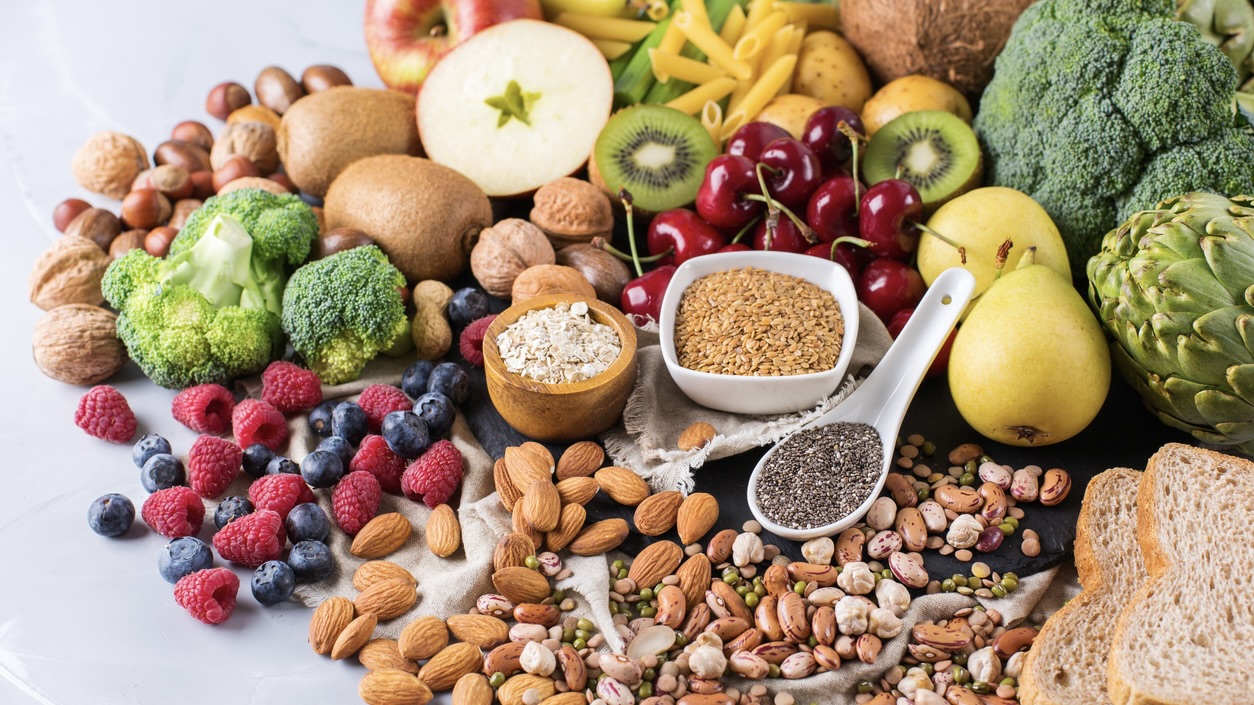The trend involves deliberately consuming much more dietary fibre than the recommended daily amount – sometimes as much as 70 to 100 grams a day.
Published Jun 20, 2025 | 7:00 AM ⚊ Updated Jun 20, 2025 | 4:29 PM

Indian diets generally contain a reasonable amount of fibre.
Synopsis: ‘Fibremaxxing’ involves consuming excessive amounts of dietary fibre in hopes of improving gut health, aiding weight loss, and clearing skin. While fibre is essential, experts warn that overconsumption can lead to digestive issues, nutrient deficiencies, and worsened symptoms in those with pre-existing gut conditions.
The latest health fad that seems to have gripped health-conscious users on social media is something called ‘fibermaxxing’.
It’s being touted as an almost magical fix for gut health, weight loss, and even clearer skin.
The trend involves deliberately consuming much more dietary fibre than the recommended daily amount – sometimes as much as 70 to 100 grams a day.
This is usually achieved through a mix of fibre-rich foods and supplements such as psyllium husk, inulin, and resistant starch powders.
But is dramatically increasing your fibre intake really beneficial? Or could it end up doing more harm than good?
Ramya Dhanas, a nutritionist based in Bengaluru, says many of her clients have taken up the diet after seeing social media videos encouraging people to “max out” their fibre intake.
But she is clear that an exclusively high-fibre diet is not a good idea.
Dhanas explains that an Indian high-fibre diet would typically consist of whole pulses such as moong, rajma, and chana; millets like bajra, jowar, and ragi; fibrous vegetables like spinach, bhindi, and carrots; and fruits like guava and apples with the skin.
“Many who follow the ‘fibermaxxing’ trend in India enhance their meals with chia or flaxseeds, and even add psyllium husk for an extra boost,” she told South First.
“A traditional meal like dal-chawal with a side sabzi, millet rotis, and sprout salads tends to provide about 40 grams of fibre daily. But this must be paired with ample water and introduced gradually to avoid digestive distress – or else it can have a bad impact on the stomach.”
Experts warn that the trend is based on ‘partial truths’ and, in some cases, may produce the opposite of the intended effects.
“Modern diets are very fibre deficient. Dietary fibre deficiency can lead to several bowel disturbances as well as colon cancer. However, we should know that fibre is not absorbable in the gut,” Dr Sonal Asthana, Lead Consultant of HPB & Liver Transplant Surgery, told South First.
“Excess fibre consumption can lead to micronutrient malabsorption and deficiency. Excess fibre can also cause gas and bloating.”
He further explained that Indian diets generally contain a reasonable amount of fibre.
But with the rising popularity of refined carbohydrates and Western-style eating patterns, there is a noticeable increase in bowel cancer and inflammatory bowel disease in the Indian population.
“It is definitely not advisable to overdo anything – whether it’s fibre, protein, or carbohydrates. All of this can lead to problems,” he added.
Shashi Iyengar, a metabolic health coach and founder of Metabolic Health India, told South First that while fibre plays a role in digestive health, overloading the diet with excessive fibre can backfire, especially in people with pre-existing gut issues.
“Many people I work with are already dealing with bloating, constipation, and IBS-like symptoms, and high-fibre diets can sometimes worsen these conditions rather than help,” he explained.
According to the Indian Council of Medical Research (ICMR), the recommended daily intake of dietary fibre for adults is between 25 and 35 grams. The fibermaxxing trend often encourages users to double or even triple this amount.
Experts suggest that while getting enough fibre is important, it should not come at the cost of a balanced diet or in isolation from other health considerations.
“What’s often ignored is the role of insulin resistance, seed oils, and processed carbohydrates in gut dysfunction and weight gain. Focusing blindly on fibre without addressing these root causes is like fixing a leak with tape,” Iyengar said.
He also flagged another concern: the displacement of nutrient-dense, protein-rich whole foods.
“I have seen cases where an overemphasis on fibre led to low intake of high-quality protein, contributing to deficiencies in B12, zinc, and other clinical nutrients – especially in vegetarians or vegans. Fibre isn’t a cure-all. In fact, for some of my clients, reducing fibre has improved digestion and metabolic health,” he added.
(Edited by Dese Gowda)
